How to clean artificial turf – 5 simple steps to keep your faux lawn looking and smelling fresh this spring, even with pets
Less is more, experts assure


Artificial turf can be a great low-maintenance option for yards if you don't want to, or can't devote time and energy to mowing and caretaking lawns regularly. That being said, artificial turf still needs gentle cleaning to keep it looking and smelling its best.
Luckily, landscapers assure us this task is quite straightforward, and share how to tackle stain removal and do a seasonal refresh this spring as we venture outside more with the milder weather.
Here, our lawn experts break how to clean artificial turf down in five simple steps, and reveal what to avoid when cleaning a backyard to keep your faux-lawn looking its best for longer.
How to clean your artificial grass without damaging it
Before cleaning artificial turf, you will need the following tools:
- A rake or leaf blower, such as the top-rated DeWALT Cordless Powered Blower, from The Home Depot.
- A gentle laundry soap, such as Dawn, from Walmart.
- Microfiber cloths, also from Walmart, or a soft-bristled scrubbing brush, from Target.
- Optional: A dedicated artificial turf cleanser, such as Stuart Pet Supply Artificial Turf Cleaner from Walmart.
- A rubber bristled broom, from The Home Depot, to lift the fibers.
1. Remove loose debris
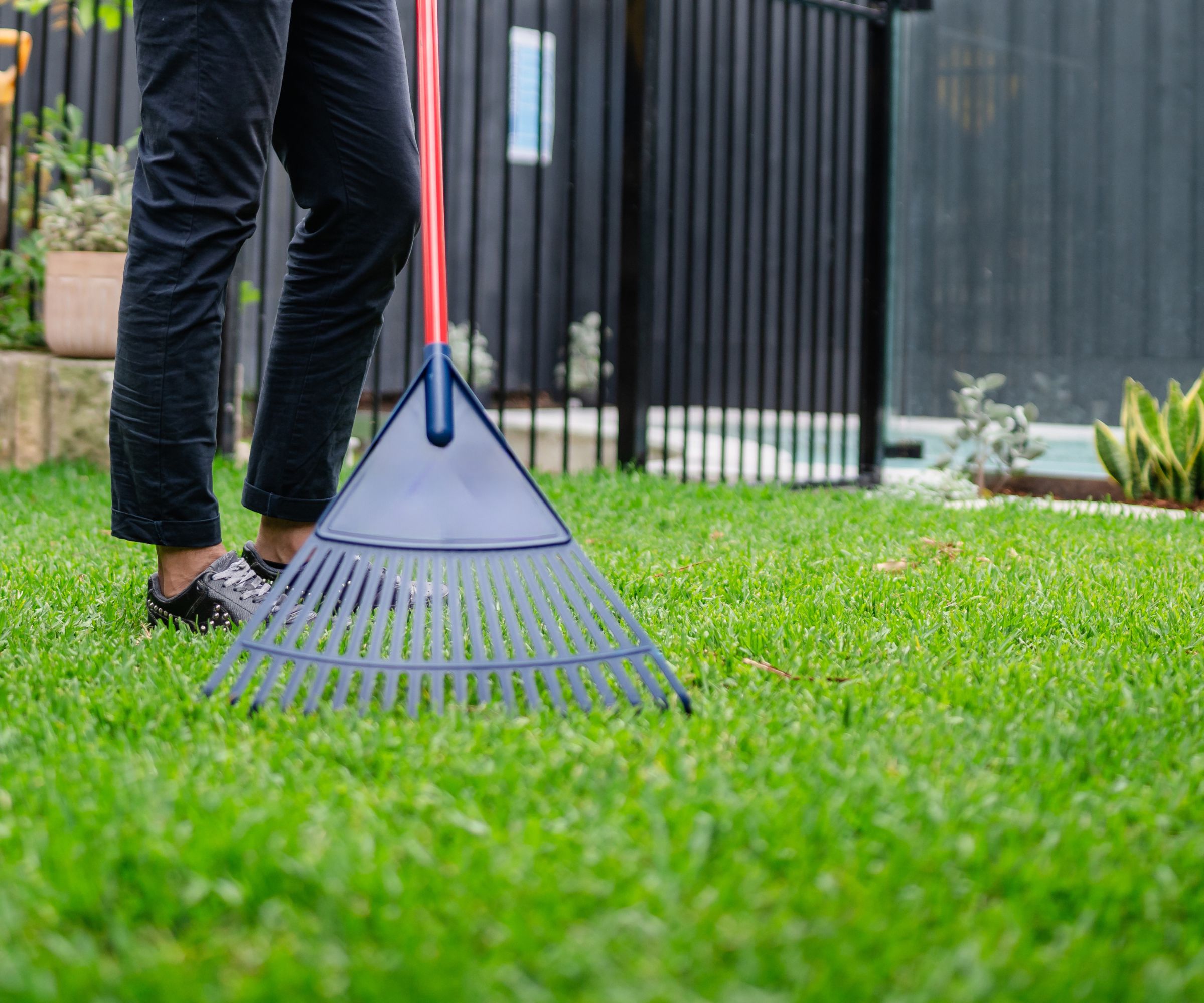
Avoid using pressure when raking to avoid damaging the black backing of artificial grass.
Much like pressure washing a patio, the best place to start when cleaning artificial turf is by removing any loose debris such as leaves, twigs, and dust with a leaf blower or leaf rake, available at The Home Depot, begins Michael Clarke, landscape architect, horticulturist, and founder of Yardwork.
He says, ‘A leaf blower works well because it can blow away dirt and small debris without disturbing the turf, but a rake is a good budget-friendly option.’
If you do not own a leaf blower but want to speed the task up without risking damage to your fake lawn, you can hire tools from The Home Depot to reduce costs and alleviate pressure on your shed organization or garage shelving ideas.
2. Treat stains
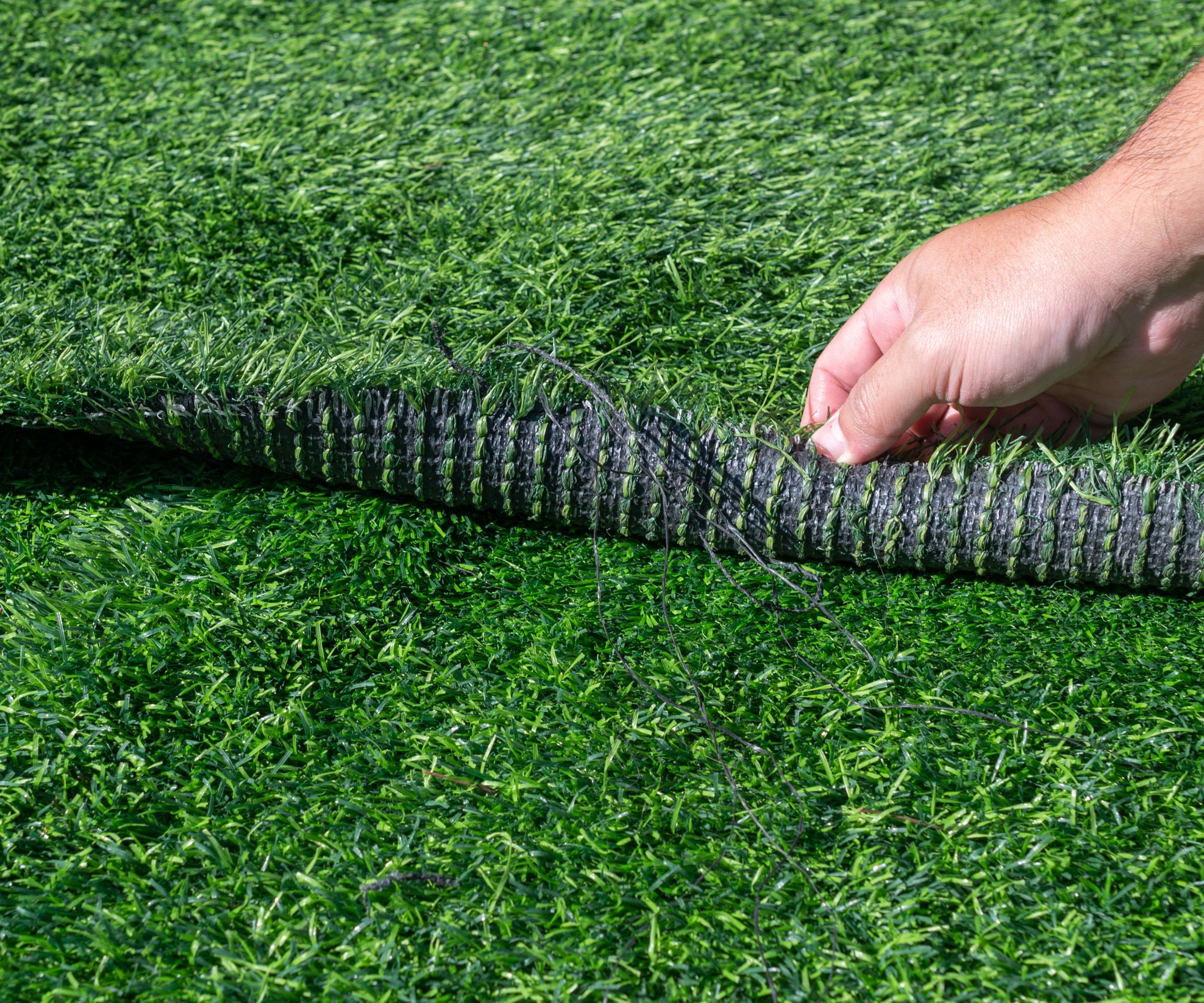
Treat stains on your artificial lawn when cleaning, and double up your inspection to check for any lawn damage, noting areas that need repairs or replacing.
If your artificial turf is showing any stains, it is best to pre-treat these before cleaning the rest, following the golden rules of stain removal as you would with laundry, says Tammy Sons, plant expert, CEO and founder of Tn Nursery.
She explains, ‘Stains need to be spot treated with a mild detergent and water, and then rinsed thoroughly to avoid any build-up. Afterward, the fibers need to be brushed upright if they've been flattened to avoid them sticking that way.’

Ideal for scrubbing artificial grass, this small handheld brush doesn't damage the plastic but still gets between the fibers to lift stains.
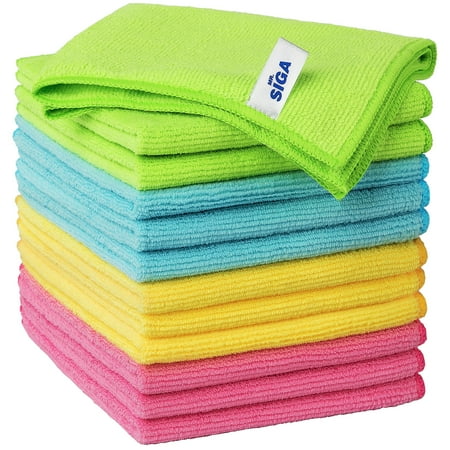
For gentler cleaning and to lift away stains and moisture, opt for Mr.SIGA microfiber cleaning cloths. They are super absorbent, helping to lift away water to prevent damage to the base layer.
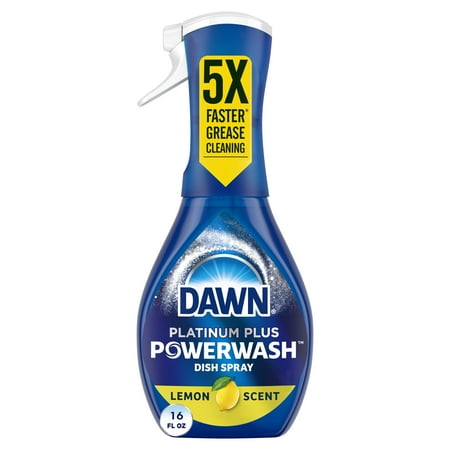
With a fresh lemon scent and a concentrated soap formula, Dawn Powerwash breaks down grease to limit how much you need to scrub.
3. Use a specialized cleaner
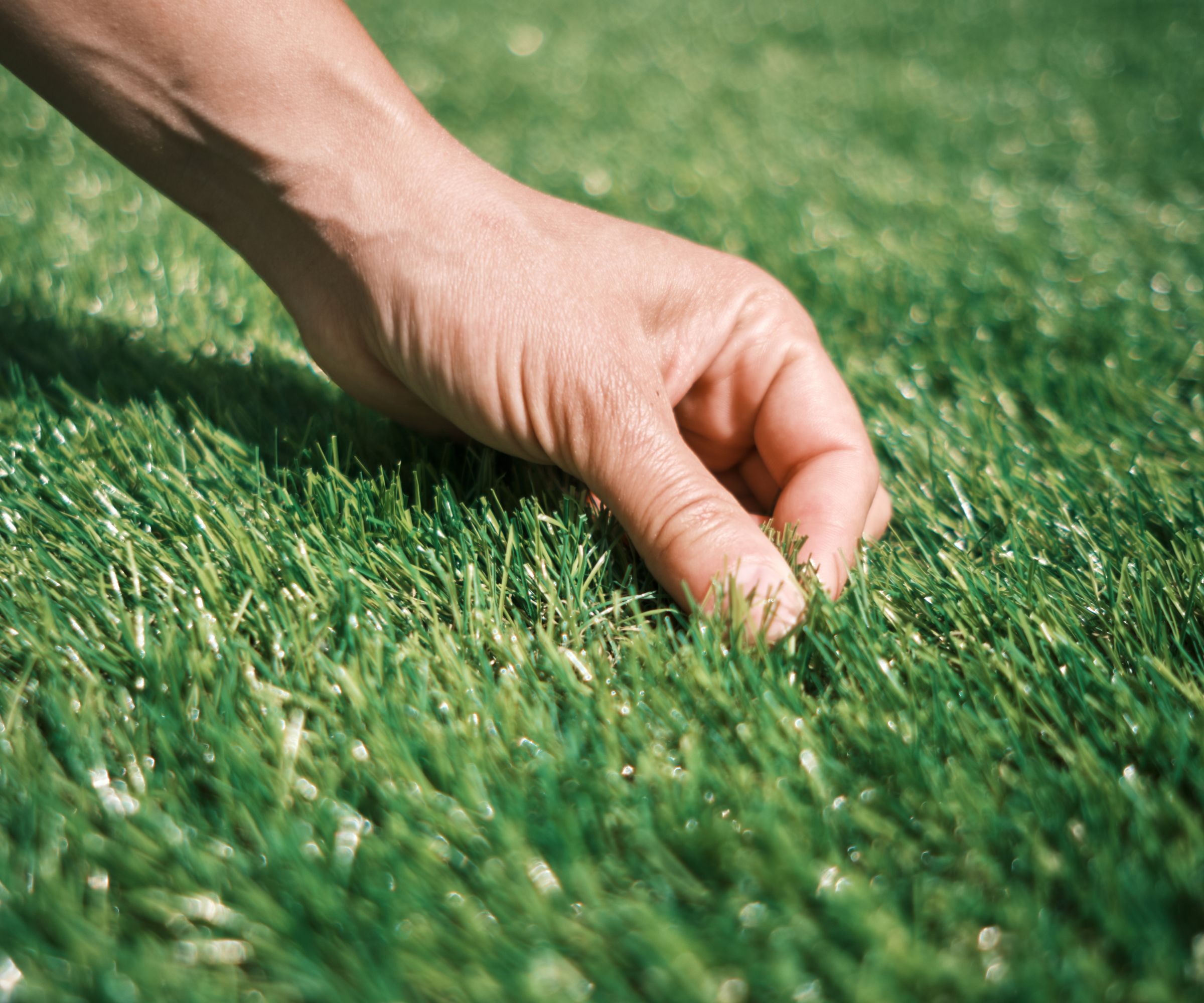
Specialized cleaners can help protect the plastic fibers so your artificial grass lasts longer.
Michael continues, ‘For regular cleaning and light stains, a diluted solution of mild dish soap or laundry detergent and water can do the trick. However, specialized cleaners like Simple Green, available at The Home Depot, can help maintain the turf's appearance and remove stains without causing damage. Use these according to the packet instructions for the best results.
‘While rinsing the turf is important, you don’t want to saturate it with too much water, as this can affect the drainage system, especially if the turf is on a hard surface or doesn’t have proper drainage.
‘Finally, to keep a home clean when you have pets, you can use an enzymatic cleaner like Nature’s Miracle, from Walmart, to neutralize odors and break down pet waste.’
4. Avoid harsh chemicals
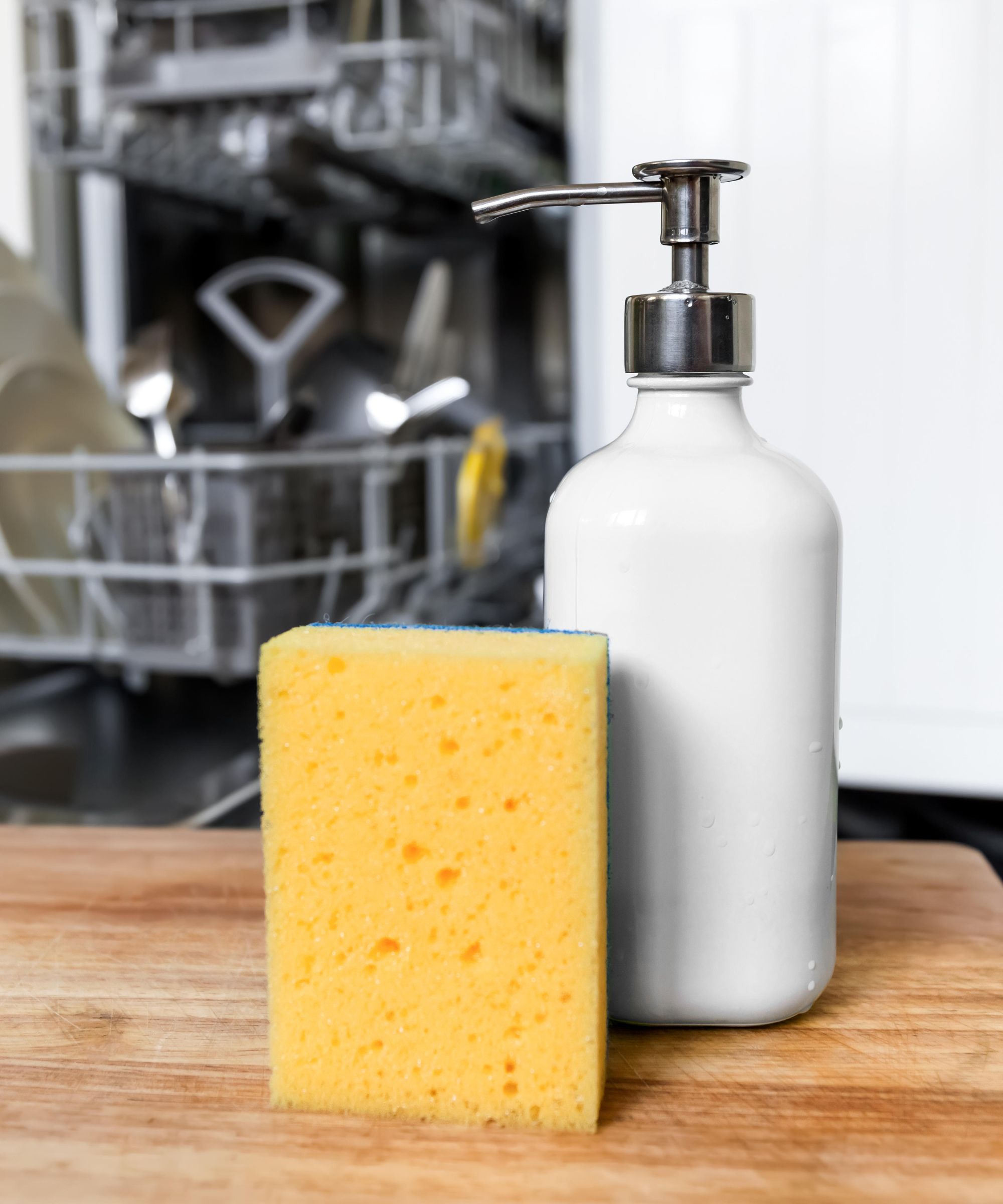
The dish soap you use in your kitchen is more than enough to clean your artificial grass and keep it looking its best.
Expert cleaners have revealed that you don't need harsh chemicals to clean well inside your home, and this extends to your yard. Tammy warns, ‘You should avoid using harsh chemicals like solvents or bleach or brushes with metal bristles. These can only damage the turf, not clean it!
‘While artificial turf is one thing you can clean with a pressure washer, I recommend avoiding it as much as possible to avoid damaging the fibers.’
5. Brush the fibers back up
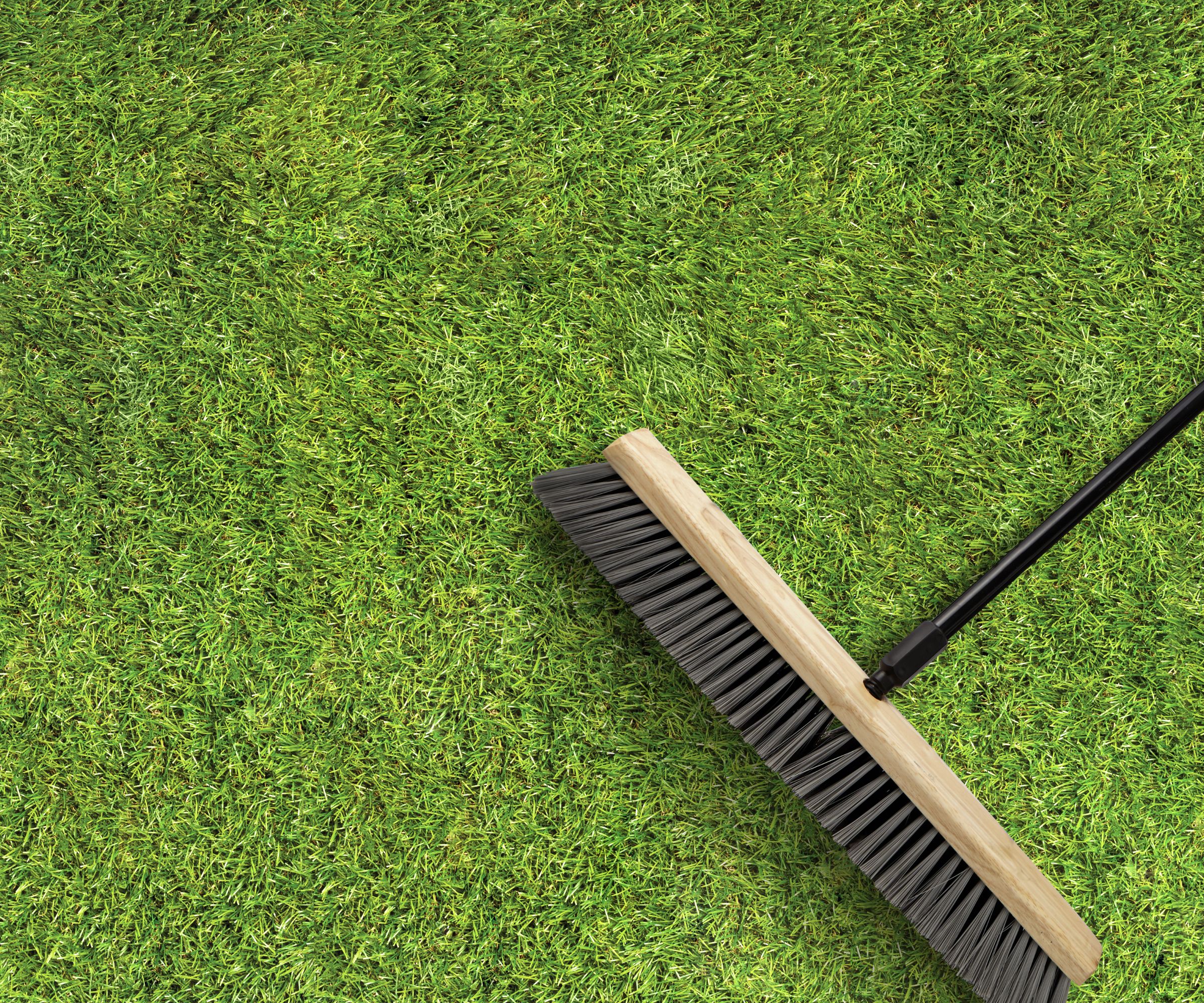
A stiff-bristled brook lifts the fibers up again, making your artificial lawn look nicer after you've cleaned it. It will also last longer.
To avoid your no-grass front yard ideas or backyard seating spots from looking worn-down, you will need to brush the fibers back up into place after cleaning, reminds Michael.
He suggests, ‘Using a synthetic turf brush, available at Lowes, or a stiff-bristled broom to brush the turf fibers against the grain. This helps lift the fibers and restore the turf’s upright position. Brushing also helps break up compacted areas, especially around heavy traffic zones.
‘Most importantly,’ he adds, ‘avoid excessive brushing, which can wear down the turf fibers or cause them to fray.’
Meet the experts

Michael Clarke is the founder of Yardwork and Pulled, the online platforms for everything home and garden. He has a degree in landscape architecture and horticulture from the University of California Davis. He was previously the founder of a landscape development and maintenance company, where he provided complete landscape services to homeowners and commercial property owners.

Tammy Sons is a horticulture plant expert, garden writer, and educator. Tammy is the CEO and founder of TN Nursery, a thriving online plant nursery based in Altamont, Tennessee.
FAQs
How often should you clean artificial turf?
Artificial turf should be brushed about once per month to keep the fibers fluffy and remove dirt and debris before they become embedded. It should then be carefully rinsed or cleaned once a year, usually after winter, to prepare it for the summer. Use this time to check the turf for any damage, too.
What should you not put on artificial grass?
There are several things you should not put on artificial grass for safety and to protect your faux lawn. Any heavy items, for example, heavy furniture or pop-up pools can damage the fibers. Hot metal such as barbeques, fire pits, and power tools should also be kept away to prevent melting.
Before you can even think about cleaning your artificial turf, you should always start by decluttering a backyard, getting rid of old tools and furniture that have broken or you no longer use, prepping the space for increased use, and hosting over the summer.
Sign up to the Homes & Gardens newsletter
Design expertise in your inbox – from inspiring decorating ideas and beautiful celebrity homes to practical gardening advice and shopping round-ups.

Chiana has been at Homes & Gardens for two years and is our resident 'queen' of non-toxic living. She spends most of her time producing content for the Solved section of the website, helping readers get the most out of their homes through clever decluttering, cleaning, and tidying tips. She was named one of Fixr's top home improvement journalists in 2024.
You must confirm your public display name before commenting
Please logout and then login again, you will then be prompted to enter your display name.
-
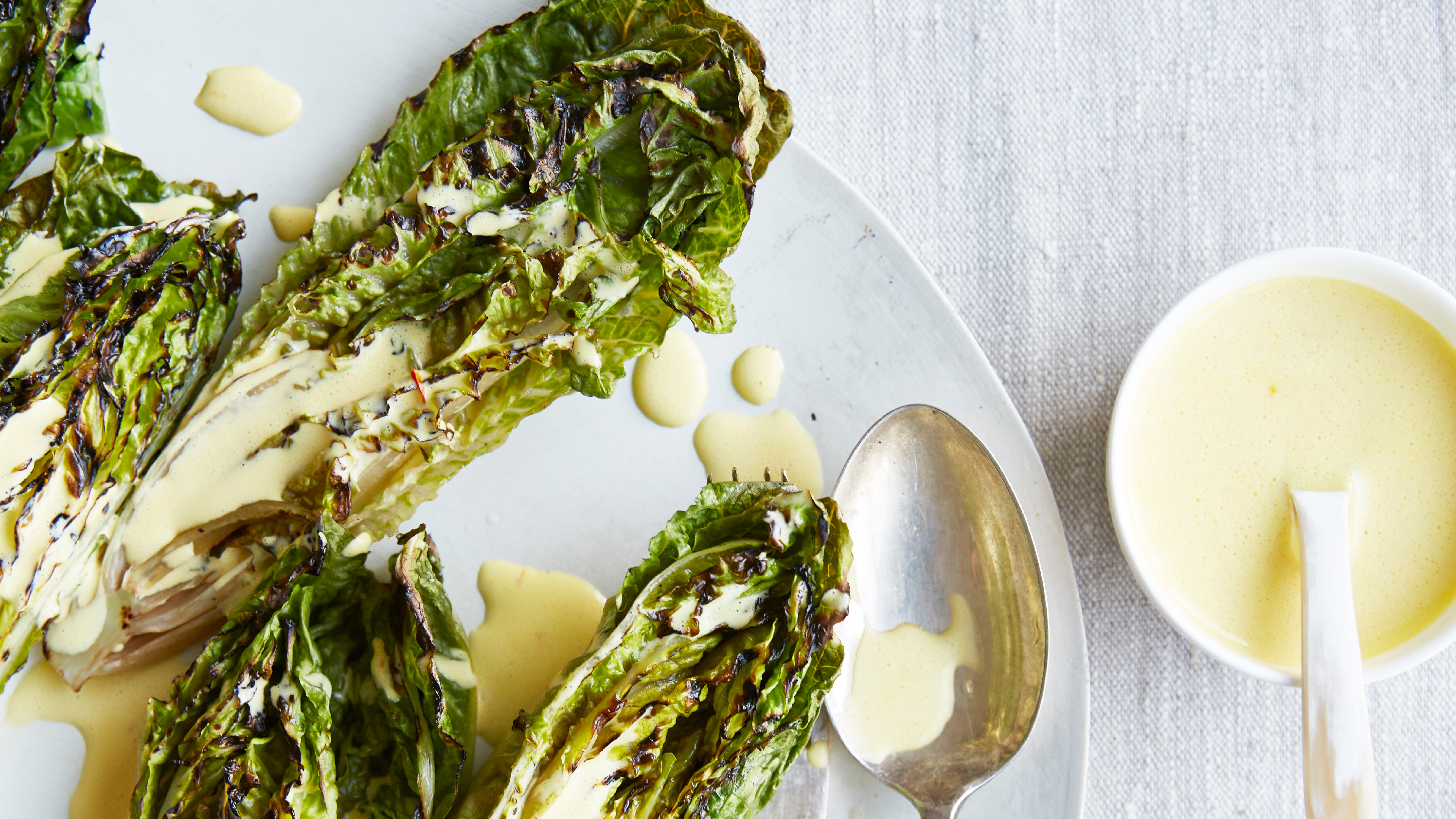 Charred little gem with saffron dressing
Charred little gem with saffron dressingThis recipe with charred little gem is both easy to make and sure to impress guests. It's the perfect side for fresh spring menus
By Alice Hart
-
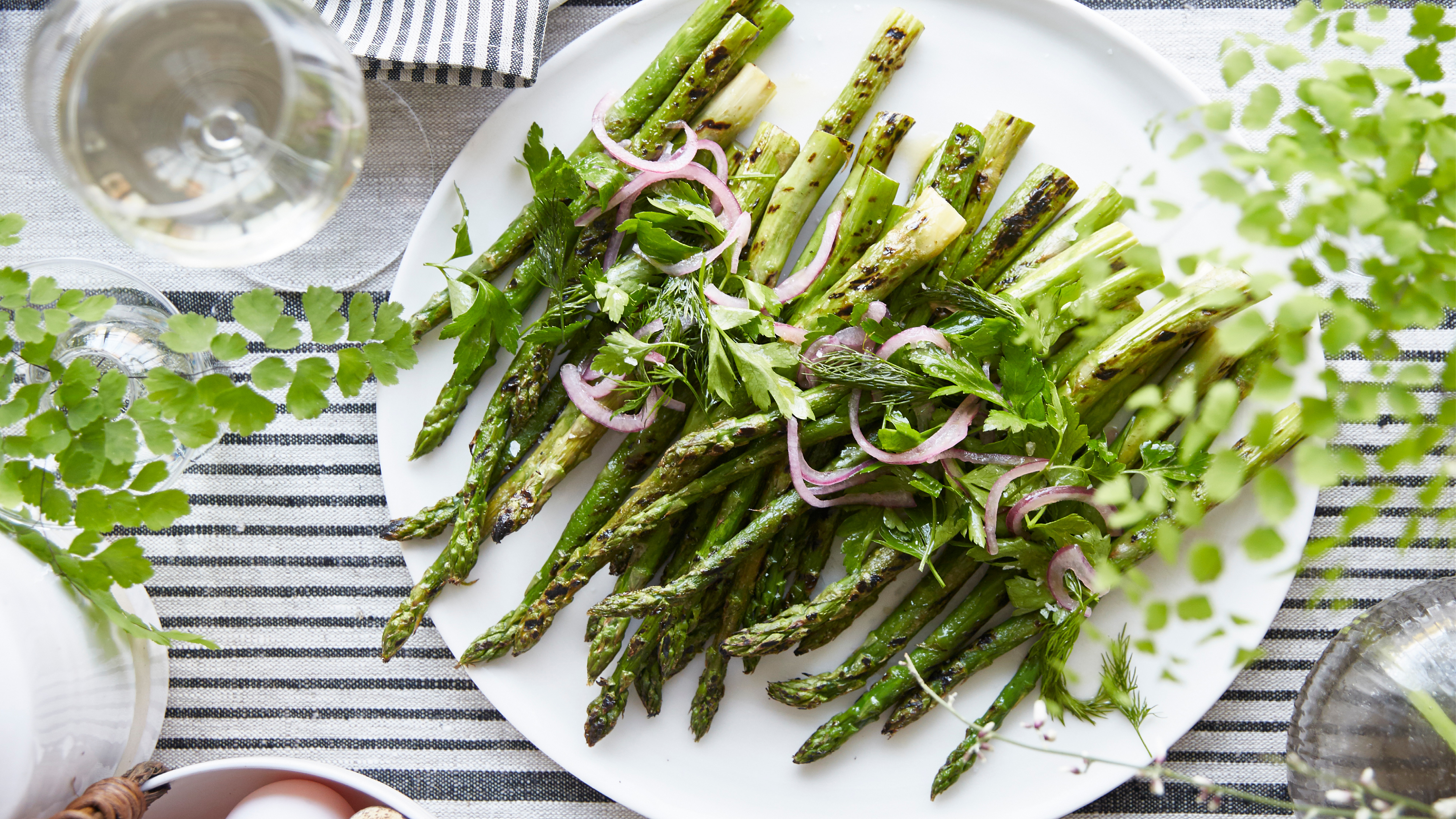 Grilled asparagus with herb and pickled red onion
Grilled asparagus with herb and pickled red onionThis grilled asparagus couldn't be easier, and it's a wonderful way to get the best flavor from our favorite spring veg. It's perfect alongside fish or lamb
By Alice Hart
-
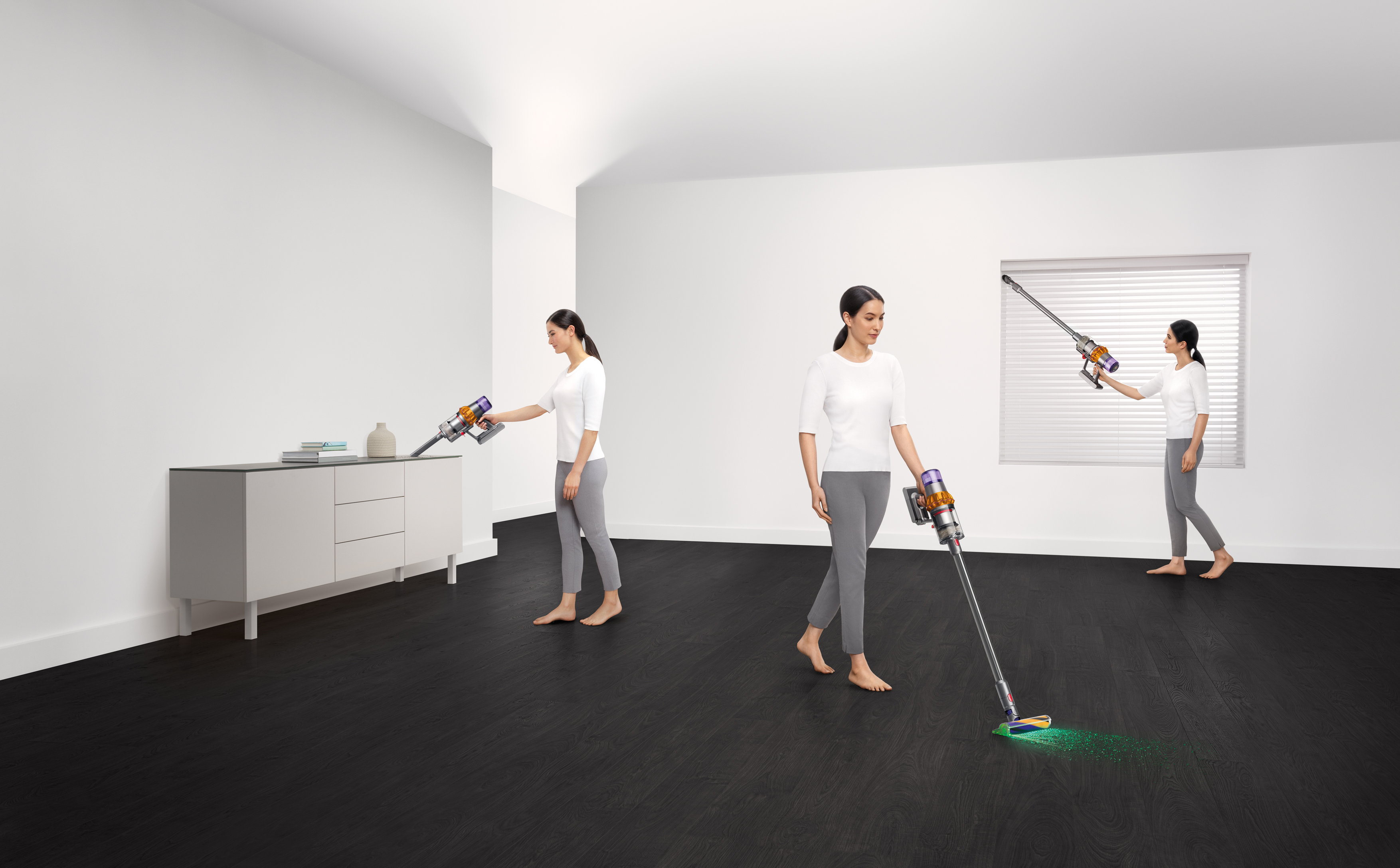 Dyson V15 Detect vs Dyson V12 Detect Slim – which is right for your home?
Dyson V15 Detect vs Dyson V12 Detect Slim – which is right for your home?I've spent more than 200 hours testing vacuum cleaners and these two cordless Dysons are my personal favorites
By Dan Fauzi
-
 I've spent over 200 hours testing vacuums and swear by my two Dysons – this is how I properly clean a Dyson vacuum filter for longer-lasting appliances
I've spent over 200 hours testing vacuums and swear by my two Dysons – this is how I properly clean a Dyson vacuum filter for longer-lasting appliancesYour Dyson vacuum will last much longer and clean at its best
By Dan Fauzi
-
 Do cleaning products expire? Professional cleaners warn time could make them ‘less effective, and in some cases, irritating to use’
Do cleaning products expire? Professional cleaners warn time could make them ‘less effective, and in some cases, irritating to use’For the best results, it pays to stay on top of the timeline of your cleaning products
By Chiana Dickson
-
 How to clean a patio – 6 different methods, and when you must use a chemical cleaning agent
How to clean a patio – 6 different methods, and when you must use a chemical cleaning agentFrom manual scrubbing, natural solutions or calling in the pros, industry experts reveal the benefits and considerations of each method
By Andy van Terheyden
-
 5 surprising but brilliant ways to clean with old socks – from perfectly buffing stainless steel to deterring pests naturally and more
5 surprising but brilliant ways to clean with old socks – from perfectly buffing stainless steel to deterring pests naturally and moreTackle dust in tricky corners, clean your mirrors and even banish bad odors with those rogue single socks
By Andy van Terheyden
-
 5 things people with clean upholstery always do – they're simple, quick and oh-so-effective
5 things people with clean upholstery always do – they're simple, quick and oh-so-effectiveEnsure your furnishing looks clean year-round with these expert tips
By Seraphina Di Mizzurati
-
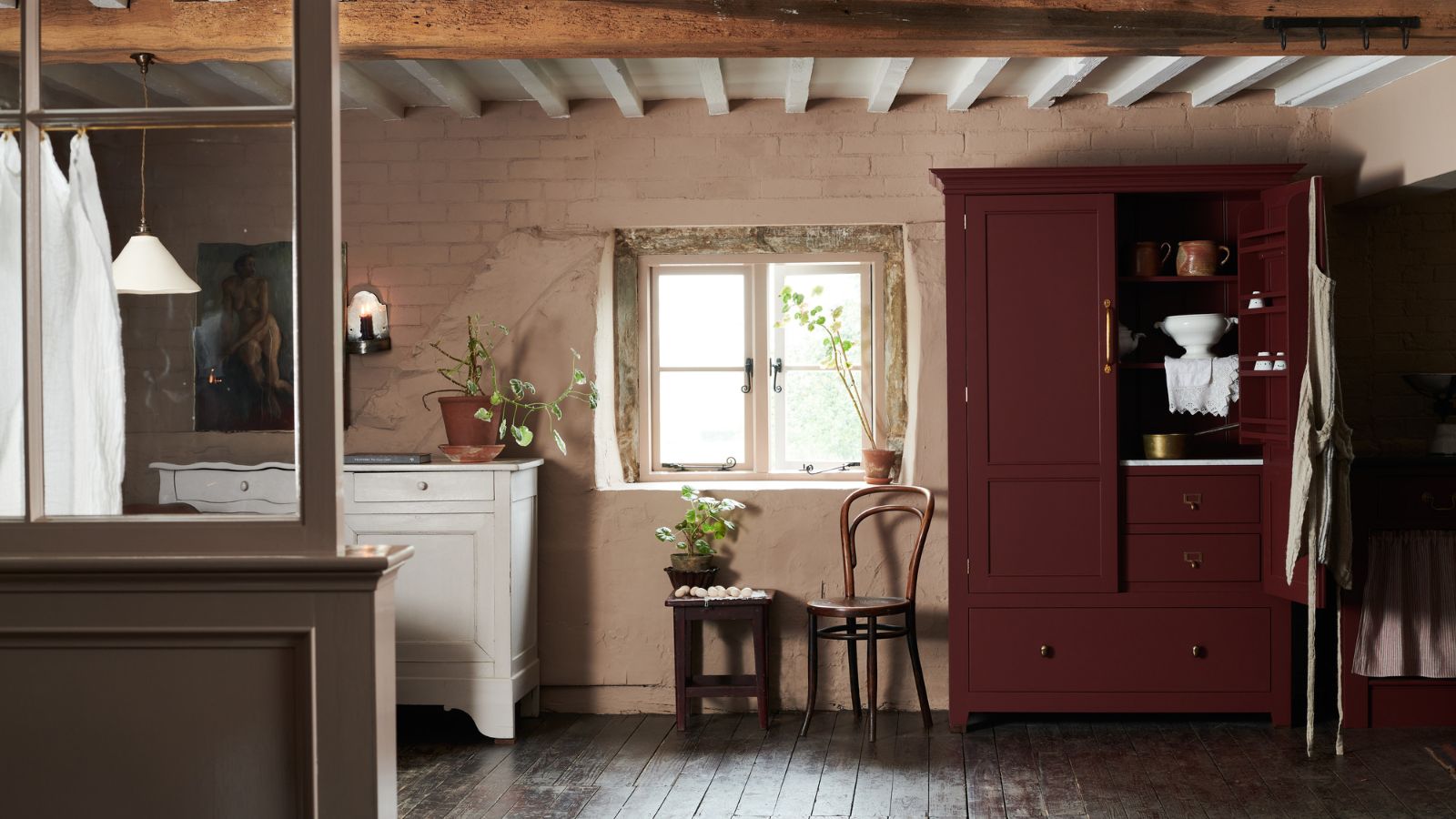 'Wick away the ick' – 6 things people with clean laundry rooms always do to make this hardworking space shine
'Wick away the ick' – 6 things people with clean laundry rooms always do to make this hardworking space shineThese tips on how to clean your laundry room will banish grime
By Seraphina Di Mizzurati
-
 How safe are carpet deodorizers? As a seasoned vacuum tester, I urge you to try alternative methods
How safe are carpet deodorizers? As a seasoned vacuum tester, I urge you to try alternative methodsNatural cleaning is always the answer
By Dan Fauzi